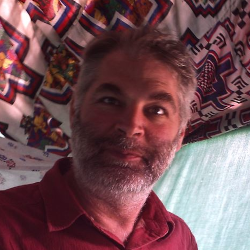Abstract
The foundation of any 3D animation technique is the modeling
paradigm that underpins it. The ultimate modeling goal is simple
curved lines that offer high geometric fidelity and which actually
lie on the surface. Spline meshes visually and mathematically
describe complex organic and mechanical shapes. This paper
defines a surface that only requires the mesh’s component curves
to fully define an enclosed region or “patch”. It implements a
new subdivision surface (SDS) technique to recursively split these
atomic patches to any adaptive level of “smoothness”. The
surface exhibits characteristics of SDS, a polynomial solution,
and tensor product interpolation.
Keywords: spline mesh, patches, parametric surface, subdivision
surface
1 Introduction
A model’s description cannot be separated from how it moves, or
animates. Traditionally, modeling technologies were developed
first, with animation decidedly ad hoc. In an age when most
computer graphics resulted in still images, this outcome was
acceptable. But, as the momentum for animation takes
precedence, consuming the vast majority of time and effort, it
makes sense to introduce a new modeling paradigm that serves
the purposes of animation first. Since very few models are static
in a scene, and modeling is a one-time cost, a model’s surface
topology should be subjugate to how it will animate. We call this,
“modeling for animation.” Importantly, the modeling paradigm
itself must accommodate robust surface definition, unpredicted
movement, and self-evident operation (so that special devices or
skilled training are not required to create new models).
2 Hermite Curves
Spline Mesh Character Modeling 2004
-
Martin Hash

- Posts: 19191
- Joined: Wed Jan 20, 2010 2:02 pm
Spline Mesh Character Modeling 2004
You do not have the required permissions to view the files attached to this post.
Shamedia, Shamdemic, Shamucation, Shamlection, Shamconomy & Shamate Change